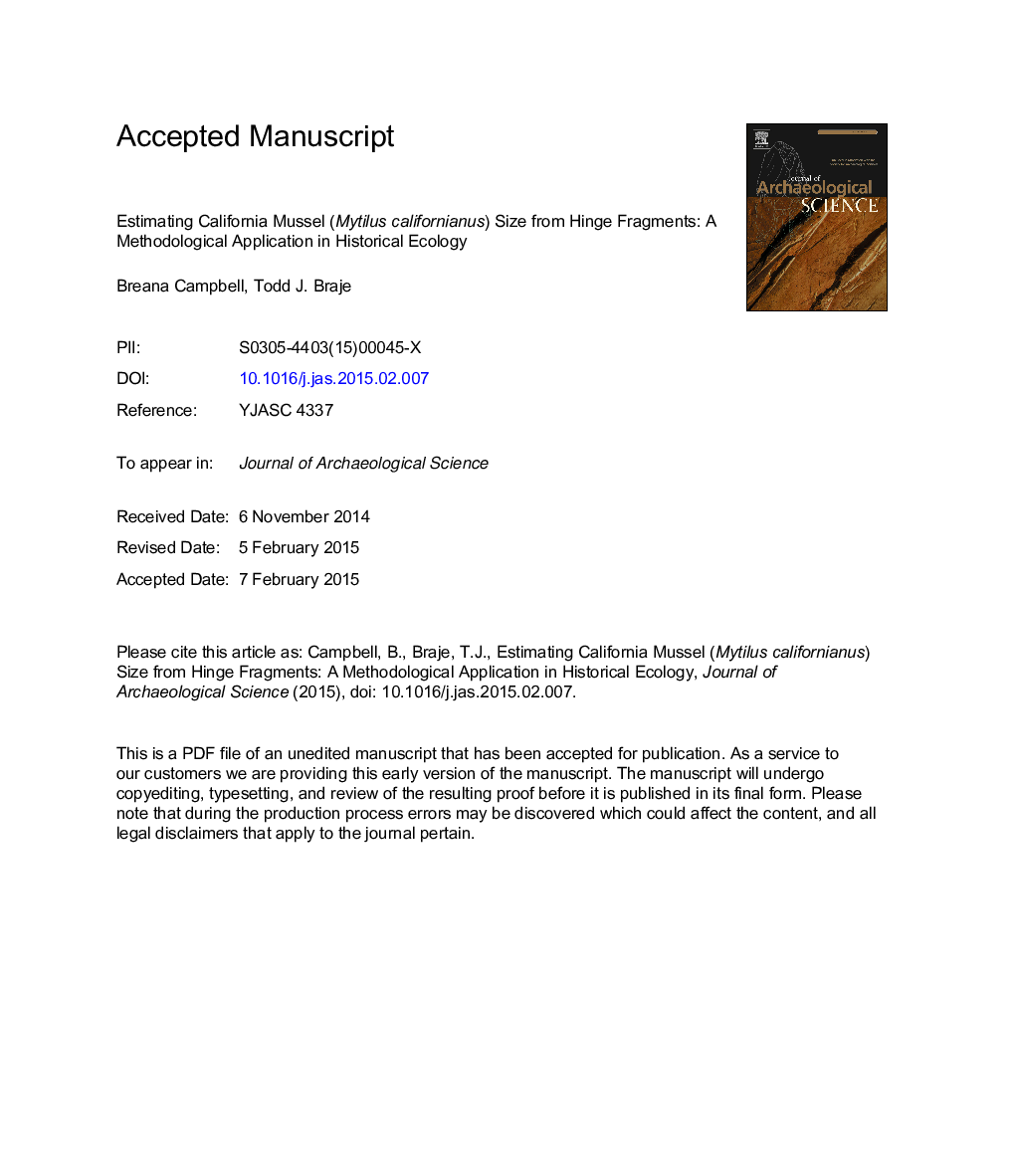| Article ID | Journal | Published Year | Pages | File Type |
|---|---|---|---|---|
| 7441929 | Journal of Archaeological Science | 2015 | 32 Pages |
Abstract
Whole shell measurements from archaeological sites increasingly have become an important component of historical ecological research in coastal zones around the world. Size variation in California mussels (Mytilus californianus), one of the dominant taxa in North American Pacific Coast shell midden assemblages, have been used to assess human impacts and natural climate change on intertidal resources over millennia. Archaeological samples are typically limited due to taphonomic processes, however, which can cause fractionation and leave precious few whole shells for measurement. Various methods have been proposed to estimate the total shell length of fragmented California mussels, but these have proved largely unreliable. Using modern samples from southern California, we developed a series of regression formulae to estimate whole California mussel sizes from hinge fragments. This allometric approach proved statistically reliable and can be applied during field or laboratory work. Here, we present our methodology to build regression formulae and our validating tests using modern samples from San Diego, California, and an archaeological sample from San Miguel Island, California.
Related Topics
Physical Sciences and Engineering
Materials Science
Materials Science (General)
Authors
Breana Campbell, Todd J. Braje,
